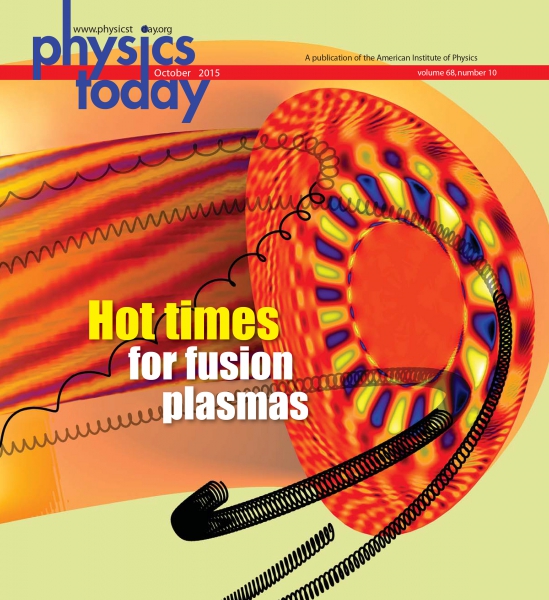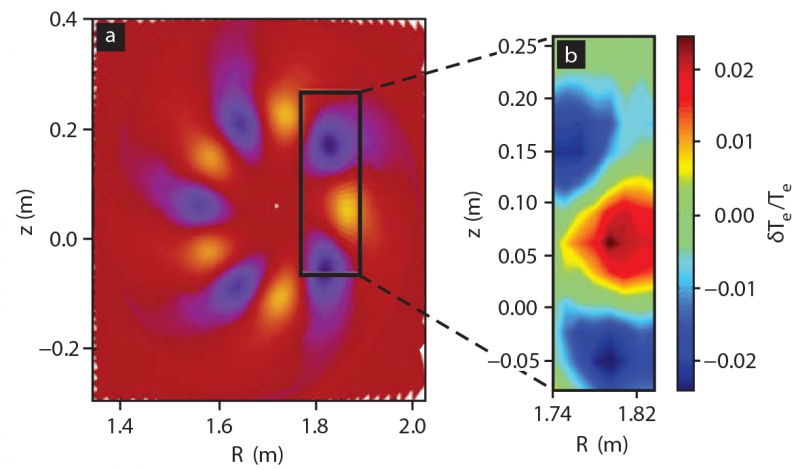26 October 2015
The cover article for Physics Today's October 2015 edition tackles heat loss in fusion reactors. The authors zoom in on interactions between the magnetic confinement and the hottest Helium nuclei in the fusion plasma (charged gas) and make special mention of recent measurements by plasma diagnostics expert Ivo Classen at DIFFER. The physicist has been taking detailed temperature data of the plasma in the reactor ASDEX Upgrade in Garching (Germany), which reveal how the charged particles interact with waves in the plasma.
Keeping fusion plasmas hot
David C. Pace, William W. Heidbrink, Michael A. Van Zeeland, Physics Today, doi https://dx.doi.org/10.1063/PT.3.2946
In a fusion reactor, a fuel of hydrogen isotopes is heated to hundreds of million degrees, at which point they collide, fuse into helium and release lots of energy. Strong magnetic fields isolate the fuel from the reactor walls, but that is not enough to run a smooth fusion reaction: instabilities in the plasma can cause problems such as heat loss. Understanding, detecting and controlling these instabilities is a major part of the fusion research at DIFFER.

Right image: simulation (a) and measurement (b) of an Alfvén Eigenmode in the ASDEX Upgrade fusion reactor in Garching (Germany). The measurement of electron temperature variations in the black box show how detailed the simulation can reproduce these kind of instabilities.
(Images copyright Physics Today)
Go to the News page.